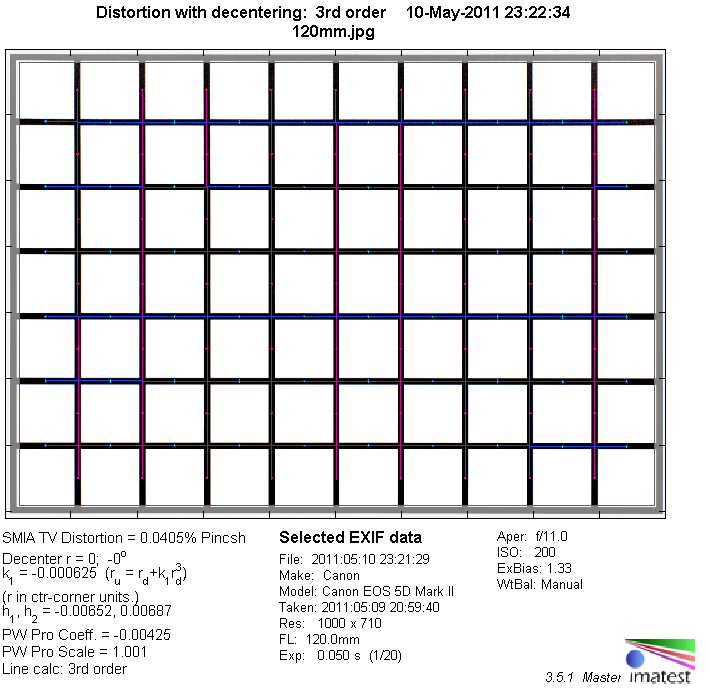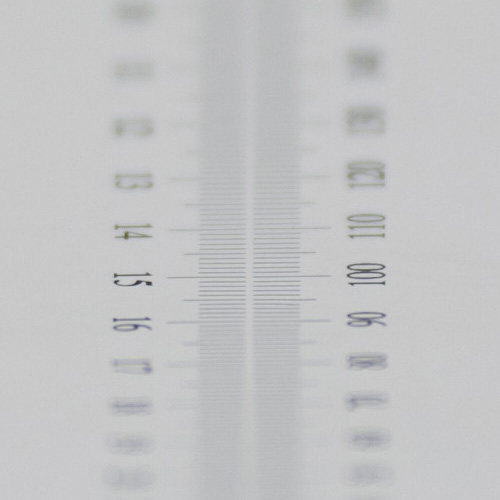|
Sigma AF 120-300mm f/2.8 APO EX HSM DG OS (Canon EOS) - Review / Lens Test - Analysis |
|
Lens Reviews -
Canon EOS (Full Format)
|
|
Page 2 of 3

Distortion
The Sigma lens shows a very good distortion characteristic. At 120mm it is basically free of distortion and at longer focal lengths there's only a slight amount of pincushion-style distortion which isn't something to worry about.
|
Move the mouse cursor over the focal length text marks below to observe the respective distortion
|
| 120mm |
200mm |
300mm |
|

|
Vignetting
Typical for ultra-large aperture lenses it produces some vignetting at max. aperture. The issue is moderate at 120mm and 200mm @ f/2.8 but increases towards the very long end. The light falloff is clearly visible at 300mm @ f/2.8 although not extreme within the full format scope. It is still advisable to stop down a little if you want to tame the issue. That all said it remains in line to the vignetting figures that we've seen from its shorter cousins (70-200mm f/2.8).

MTF (resolution & chromatic aberrations)
The resolution characteristic of the Sigma lens is very even across the range but technically it does not convince completely. The center performance is exceptionally high throughout the focal length range and large to medium aperture settings. This is certainly the most important criteria when thinking of the typical applications for such a lens. The border quality isn't quite on the same level though. At 120mm the borders/corners vary around the good to very good barrier. There is a bit of a penalty at max. aperture and 200/300mm but even so it's still good here. The quality recovers when stopping down to f/4 again. The global peak is around f/5.6 at all focal lengths. Regarding its native characteristic is should be very suitable for use with tele converters which mask out the outer image portions (same goes for the use on APS-C DSLRs).
The center quality of the tested sample was generally good with a slight tendency of softer results at the top-right image field at longer focal lengths. Zoom lenses with a build-in image stabilizer are never really perfect in this respect.
Please note that the MTF results are not directly comparable across the different systems!
Below is a simplified summary of the formal findings. The chart shows line widths per picture height (LW/PH) which can be taken as a measure for sharpness.
If you want to know more about the MTF50 figures you may check out the corresponding Imatest Explanations
Chromatic Aberrations (CAs)
The Sigma claims to have used an APO (apochromatic) design and the lateral CAs (color shadows at hard contrast transitions) are, correspondingly, on a very low level. This contributes to the perceived image sharpness of the lens.

Bokeh
In important aspect of a large aperture lens is the quality of the bokeh (out-focus blur). The Sigma does a good job here.
Out-of-focus highlights have a circular image shape throughout most of the image field. They deteriorate towards "cat's eyes" towards the borders/corners but this is a rather typical behavior on full format DSLRs. Stopping down to f/4 and f/5.6 improves this issue. There's only a bit of an outlining effect at the highlight edges and the inner zone of the highlight discs is quite even albeit less perfect than on the best prime lenses.
 The background blur (shown to the right below) is very smooth and foreground blur (to the left) is only slightly more nervous.
The background blur (shown to the right below) is very smooth and foreground blur (to the left) is only slightly more nervous.

Bokeh Fringing
The terms "bokeh fringing" refers to color halos in the focus transition zone. They are green in front of the focus point and purple beyond. The Sigma lens shows a comparatively marginal degree of bokeh fringing at f/2.8 and these traces are mostly gone from f/4 onwards. This is a rare and therefore exceptional result - it -almost- qualifies as a so-called "Super-Apochromat".
|
Move the mouse cursor over the f-stop marks below to observe the respective bokeh fringing
|
| f/2.8 |
f/4 |
f/5.6 |
f/8 |
|

|
|